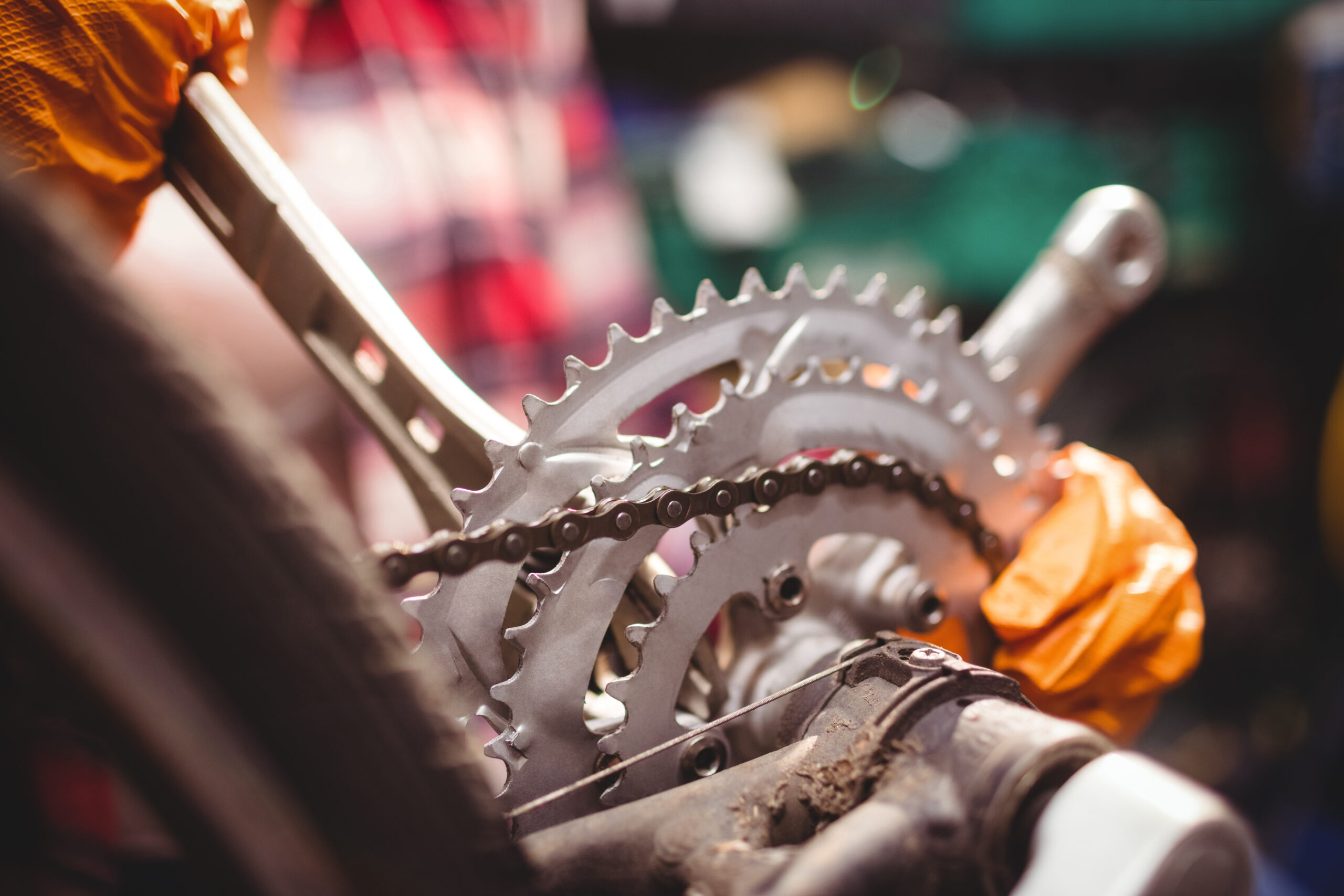
Close-up of mechanic repairing a bicycle in workshop
Chainsaw chains are among the most essential parts for the proper operation of this tool, playing an essential role in its performance and maintenance needs. Being aware of various types, sizes, and maintenance requirements for chainsaw parts is paramount for every owner or operator – learn everything here about yours.
Types:
They come in different types, each designed for specific cutting applications. The three main types are:
- Full Chisel: Known for its aggressive cutting performance, it has square-cornered teeth that provide efficient cutting in clean wood. It is ideal for professional loggers or those tackling larger timber.
- Semi-Chisel: With rounded-cornered teeth, it offers a good balance between cutting efficiency and durability. It can handle various cutting tasks, including hardwood and softwood, making it a popular choice for homeowners and occasional users.
- Low-Profile: It has a reduced profile, featuring smaller teeth and lower kickback potential. It is commonly used on lightweight tools for light-duty tasks, such as pruning or limbing.
Sizes:
They come in different sizes that correspond to the size and specifications of your tool. The size is determined by three critical measurements: the pitch, the number of drive links, and the gauge.
- Pitch: It refers to the distance between the chain’s drive links. It is measured in inches. Common pitch sizes include 3/8 inch, 0.325 inch, and 0.404 inch. The pitch size must match the sprocket on your tool for proper operation.
- Gauge: It represents the thickness of the drive links. It is measured in inches as well. Common gauge sizes include 0.050, 0.058, and 0.063 inches. Using a chain with the correct gauge is crucial to ensure optimal performance and prevent damage.
- The Number of Drive Links: The number of links determines the part’s length and varies based on the particular model of your tool. Counting the drive links accurately when purchasing a replacement chain is essential.
Maintenance:
Proper maintenance of any facility or machine is crucial in order to maximize its life and effectiveness, here are a few maintenance tips:
- Regular Cleaning: Chainsaw parts can accumulate debris, sawdust, and resin during use. It is essential to clean them after each use to prevent clogging and ensure smooth operation. Utilise a brush or compressed air to remove dirt and debris.
- Chain Tension: Check and adjust the tension regularly. A loose one can lead to derailment or kickback, while an overly tight chain can cause excessive wear and strain. Refer to your tool’s manual for proper tensioning instructions.
- Sharpening: They become dull over time due to the cutting action. Regularly sharpening the part using a round file or a sharpener is necessary for optimal cutting performance. Follow the manufacturer’s recommendations for the appropriate sharpening angles and techniques.
- Lubrication: Proper lubrication is crucial to reduce friction and prevent premature wear. Make sure to use a high-quality bar and chain oil and regularly apply it to ensure smooth operation.
- Replacement: Signs of a worn-out part include excessive vibration, difficulty cutting, or visibly worn teeth. Always replace it with the correct size and type recommended by the manufacturer.
In conclusion, understanding chainsaw parts is essential for every owner. By knowing the different types, sizes, and maintenance requirements, you can ensure optimal performance and extend the lifespan of your tool. Keep the following in mind when purchasing cutting tools: select one suitable to your cutting needs; maintain it regularly and replace it when necessary; this way they’ll serve you for many years ahead.






